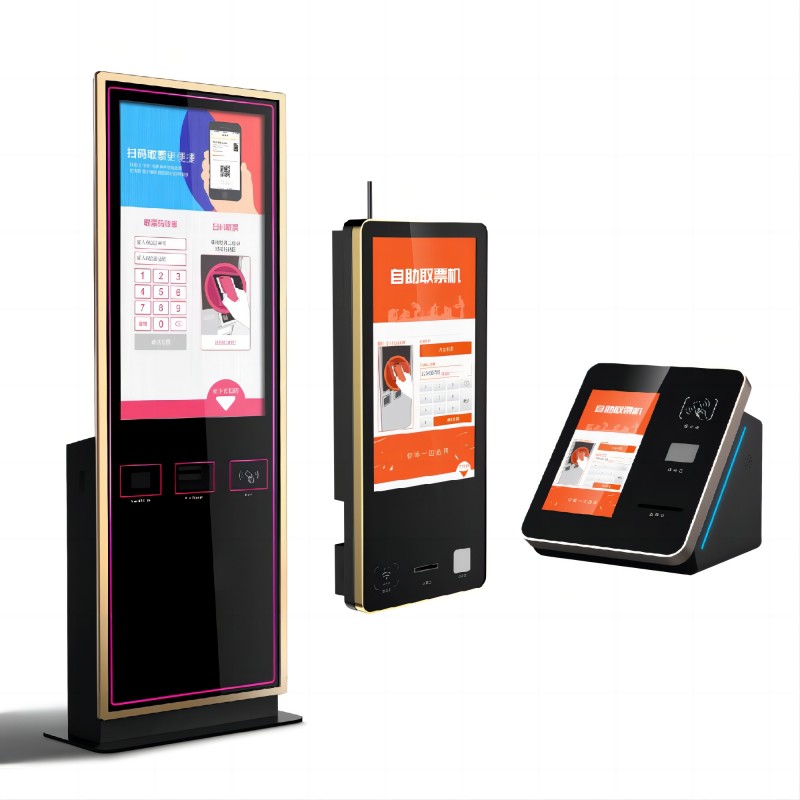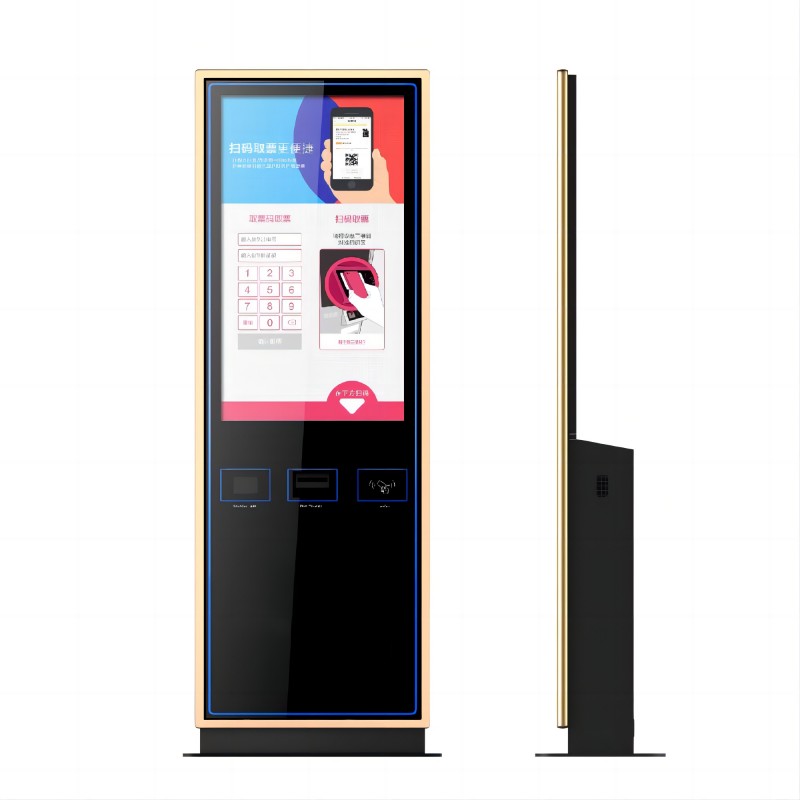
| Specification Category | Details |
|---|---|
| Physical Specifications | Dimensions: 50-70 inches tall, 20-30 inches wide, 15-25 inches deep Weight: 100-300 lbs Material: Durable metal (stainless steel, aluminum), with powder-coated or painted finishes Mounting Options: Floor-standing, wall-mounted, countertop |
| Display | Touchscreen Size: 15-24 inches, capacitive multi-touch Resolution: Full HD (1920x1080) or higher Brightness: Adjustable, up to 1000 nits for outdoor Touch Technology: Capacitive or resistive |
| Processing Unit | CPU: Intel Core i3/i5/i7 or equivalent RAM: 4GB to 16GB Storage: 128GB SSD or higher Operating System: Windows, Linux, or Android |
| Payment Systems | Card Reader: EMV-compliant chip and magnetic stripe reader NFC/RFID: For contactless payments Cash Handling: Optional bill acceptor, dispenser, coin acceptor |
| Printing | Ticket Printer: Thermal, 200-500 ticket capacity Receipt Printer: Separate thermal printer for receipts |
| Connectivity | Network: Ethernet, Wi-Fi, optional 4G/5G USB Ports: Multiple USB 2.0/3.0 Bluetooth: Optional for peripherals |
| Additional Features | Barcode Scanner: 1D/2D barcode, QR code scanning Speakers: Integrated audio for guidance/alerts Cameras: Optional for facial recognition/security Security: Anti-vandalism, secure payment processing, locks |
| Environmental Specs | Operating Temperature: 0°C to 40°C (indoor), -20°C to 50°C (outdoor) Weather Resistance: IP54 or higher Power Supply: 110-240V AC, with UPS backup options |
| Customization Options | Branding: Custom colors, logos, exterior designs Software Interface: Tailored UI/UX Accessibility Features: ADA compliance, height adjustment, Braille, audio assistance |
Start the Process: Approach the kiosk and tap the touchscreen to begin. The main menu will display options for ticket purchases, reservations, or other services.
Select Your Service: Choose the type of ticket or service you need, such as event tickets, transportation, or parking. Follow the on-screen prompts to specify details like destination, time, or seat selection.
Enter Information: Input any necessary information, such as the number of tickets, dates, or personal details. Use the on-screen keyboard or scanner to enter data quickly.
Make Payment: Select your preferred payment method (credit/debit card, mobile payment, or cash). Follow the instructions to complete the transaction securely.
Receive Ticket: Once payment is confirmed, the kiosk will print your ticket(s). Collect the ticket(s) from the designated slot, along with any receipts or additional documents.
Finalize and Exit: Review the transaction summary on the screen, and ensure you have all your items before leaving. The kiosk will then return to the main menu, ready for the next user.

Time Efficiency: Allows customers to quickly purchase and print tickets, reducing wait times and improving overall service speed.
24/7 Accessibility: Operates around the clock, offering ticketing services outside of regular business hours, providing greater convenience.
Cost Reduction: Lowers labor costs by automating the ticketing process, reducing the need for staffing at ticket counters.
Enhanced Customer Experience: Provides a user-friendly interface that simplifies the ticketing process, improving customer satisfaction.
Queue Management: Helps in managing and reducing long queues, particularly during peak times or events, leading to smoother operations.
Revenue Growth: Offers upselling opportunities, such as suggesting premium seats or additional services during the transaction.
Data Collection: Captures valuable customer data, allowing businesses to analyze purchasing trends and improve service offerings.

Customization Options of self service ticketing kiosk
| Purchase Considerations of self service ticketing kiosk
|
What did our happy clients say?
Fantastic experience with this ticket kiosk! Fast, user-friendly, and reliable. The customization options were perfect for our needs. Highly recommend this kiosk manufacturer!
We’re thrilled with our new ticket kiosk. It’s robust, efficient, and seamlessly integrates with our system. The support and service from the manufacturer were outstanding.
Excellent investment! The ticket kiosk is intuitive and sleek, and the quality exceeded our expectations. The manufacturer's team was professional and responsive throughout the process.
The ticket kiosk has been a game-changer for us. It’s quick, easy to use, and well-built. The manufacturer provided top-notch customization and support. Highly recommended!